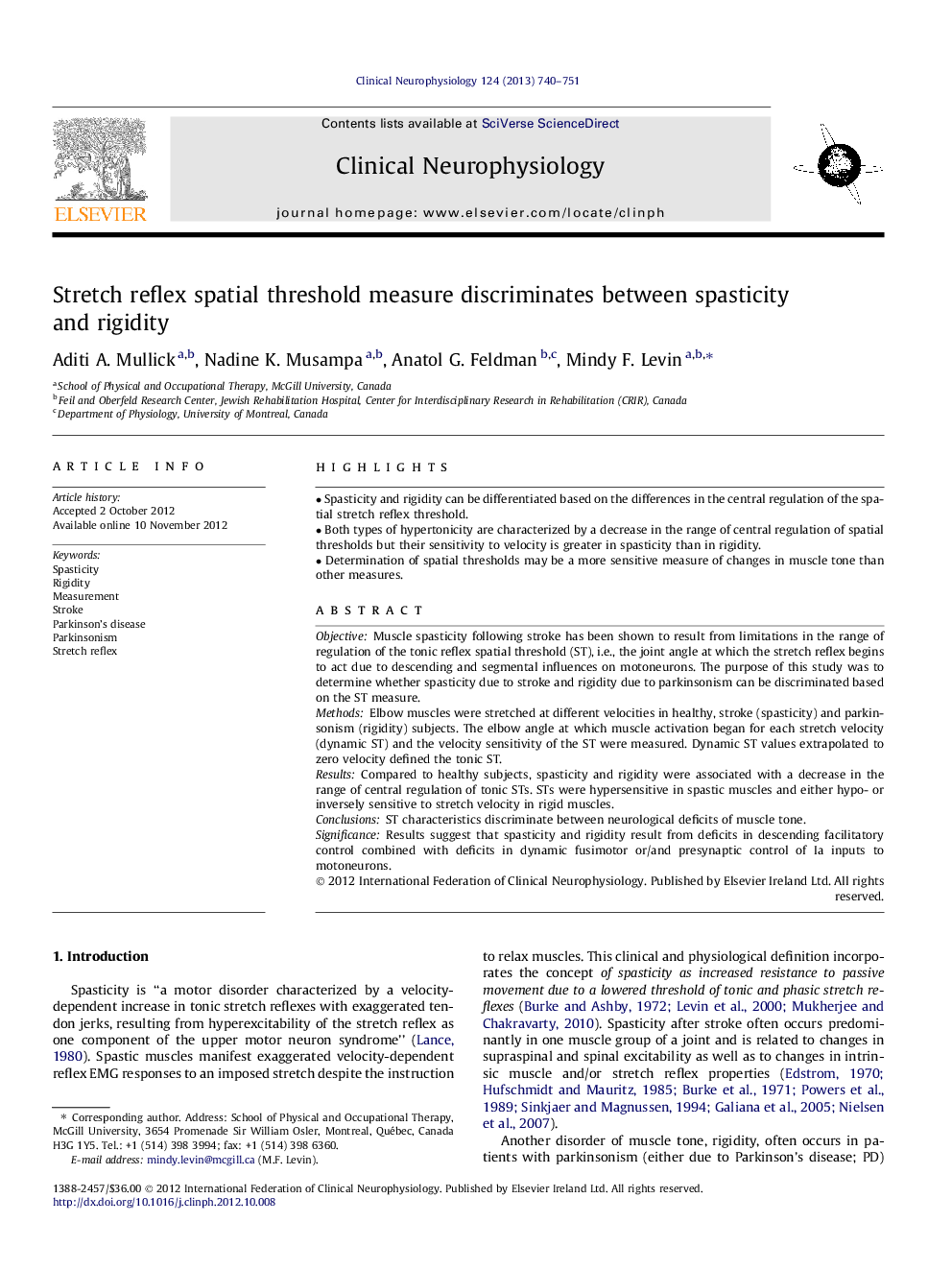| Article ID | Journal | Published Year | Pages | File Type |
|---|---|---|---|---|
| 3044184 | Clinical Neurophysiology | 2013 | 12 Pages |
ObjectiveMuscle spasticity following stroke has been shown to result from limitations in the range of regulation of the tonic reflex spatial threshold (ST), i.e., the joint angle at which the stretch reflex begins to act due to descending and segmental influences on motoneurons. The purpose of this study was to determine whether spasticity due to stroke and rigidity due to parkinsonism can be discriminated based on the ST measure.MethodsElbow muscles were stretched at different velocities in healthy, stroke (spasticity) and parkinsonism (rigidity) subjects. The elbow angle at which muscle activation began for each stretch velocity (dynamic ST) and the velocity sensitivity of the ST were measured. Dynamic ST values extrapolated to zero velocity defined the tonic ST.ResultsCompared to healthy subjects, spasticity and rigidity were associated with a decrease in the range of central regulation of tonic STs. STs were hypersensitive in spastic muscles and either hypo- or inversely sensitive to stretch velocity in rigid muscles.ConclusionsST characteristics discriminate between neurological deficits of muscle tone.SignificanceResults suggest that spasticity and rigidity result from deficits in descending facilitatory control combined with deficits in dynamic fusimotor or/and presynaptic control of Ia inputs to motoneurons.
► Spasticity and rigidity can be differentiated based on the differences in the central regulation of the spatial stretch reflex threshold. ► Both types of hypertonicity are characterized by a decrease in the range of central regulation of spatial thresholds but their sensitivity to velocity is greater in spasticity than in rigidity. ► Determination of spatial thresholds may be a more sensitive measure of changes in muscle tone than other measures.
